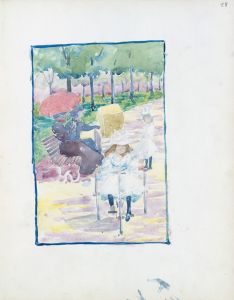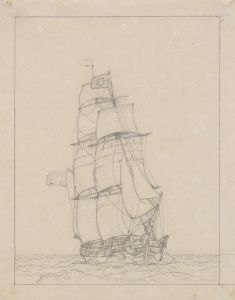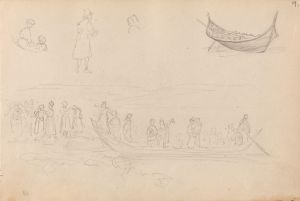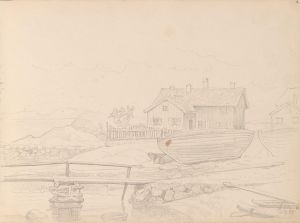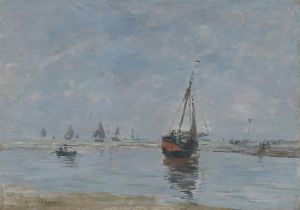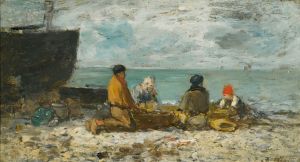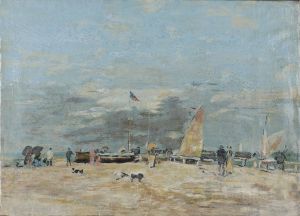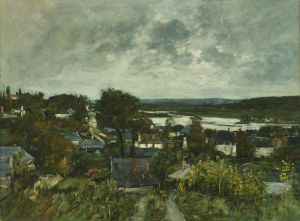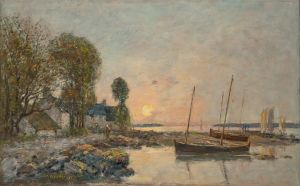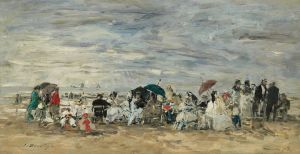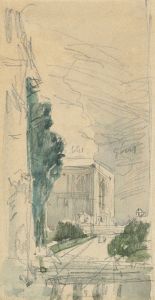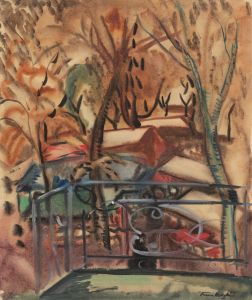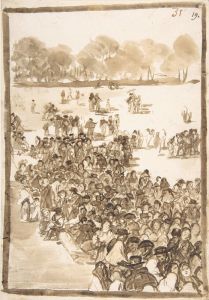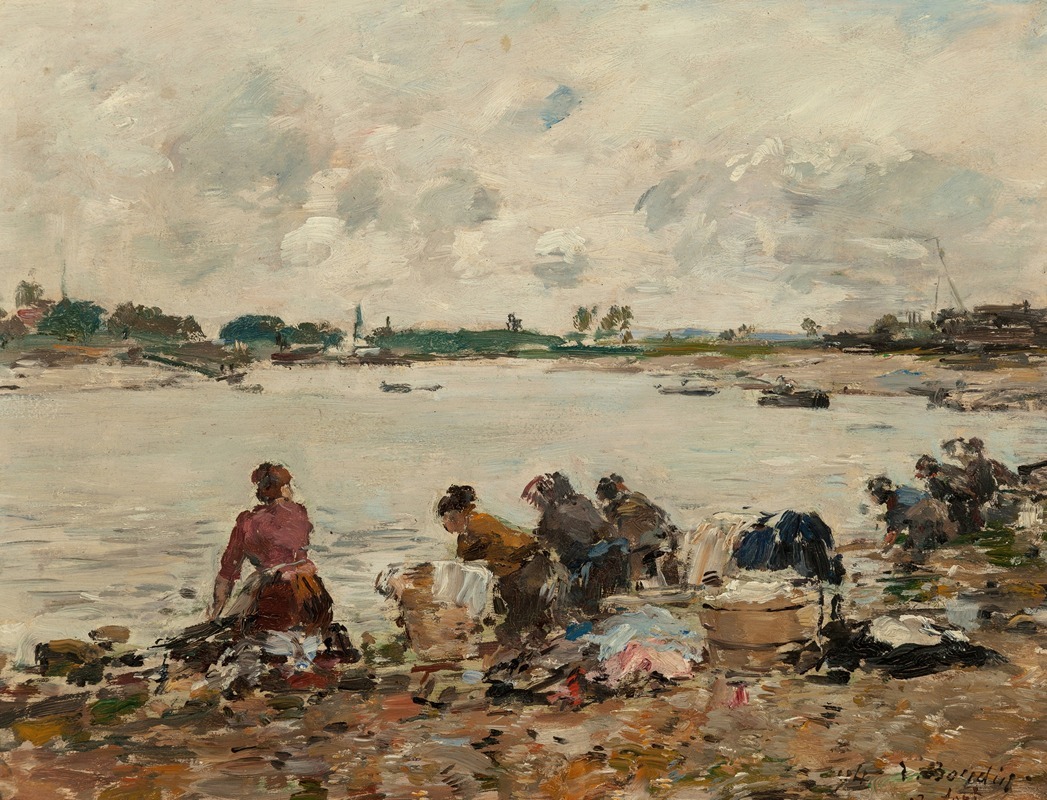
Laveuses au bord de la Touques
A hand-painted replica of Eugène Boudin’s masterpiece Laveuses au bord de la Touques, meticulously crafted by professional artists to capture the true essence of the original. Each piece is created with museum-quality canvas and rare mineral pigments, carefully painted by experienced artists with delicate brushstrokes and rich, layered colors to perfectly recreate the texture of the original artwork. Unlike machine-printed reproductions, this hand-painted version brings the painting to life, infused with the artist’s emotions and skill in every stroke. Whether for personal collection or home decoration, it instantly elevates the artistic atmosphere of any space.
Eugène Boudin's painting Laveuses au bord de la Touques (translated as Laundresses on the Banks of the Touques) is a work that reflects the artist's dedication to capturing scenes of everyday life and the natural environment. Boudin, a French painter born in 1824, is widely regarded as one of the precursors of Impressionism, known for his plein air (outdoor) painting technique and his ability to depict light and atmosphere with remarkable sensitivity.
This particular painting portrays a group of women washing clothes along the banks of the Touques River, a waterway in the Normandy region of France. The Touques River flows through several towns, including Pont-l'Évêque and Trouville-sur-Mer, the latter being a location frequently depicted in Boudin's works. The scene is characteristic of Boudin's interest in rural and coastal life, as well as his focus on the labor and daily activities of ordinary people.
The composition of Laveuses au bord de la Touques emphasizes the harmony between human activity and the surrounding landscape. Boudin's use of soft, natural light and his attention to atmospheric effects are evident in the painting. The figures of the laundresses are integrated into the environment, with their movements and postures suggesting the rhythm of their work. The river, sky, and vegetation are rendered with a delicate touch, showcasing Boudin's skill in capturing the transient qualities of light and weather.
Boudin's artistic approach was influenced by his early exposure to the Barbizon School and his friendships with artists such as Claude Monet. His works often bridge the gap between the realism of the mid-19th century and the emerging Impressionist movement. While Boudin did not fully adopt the Impressionist style, his emphasis on painting en plein air and his focus on the effects of light and atmosphere were significant contributions to the development of the movement.
The exact date of Laveuses au bord de la Touques is not definitively documented, but it is consistent with Boudin's broader body of work, which frequently depicted scenes of Normandy's landscapes and coastal life. The painting is an example of his ability to find beauty in ordinary moments and to elevate them through his art.
Today, Eugène Boudin's works are celebrated for their role in the evolution of modern art and their poetic depiction of 19th-century life. His paintings are held in numerous public and private collections worldwide, including major museums such as the Musée d'Orsay in Paris. However, specific details about the current location or ownership of Laveuses au bord de la Touques are not readily available.





![Le Moulin [Environs De Martigues]](/imgs/236206/s/felix-ziem-le-moulin-environs-de-martigues-f7c308fe.jpg)
